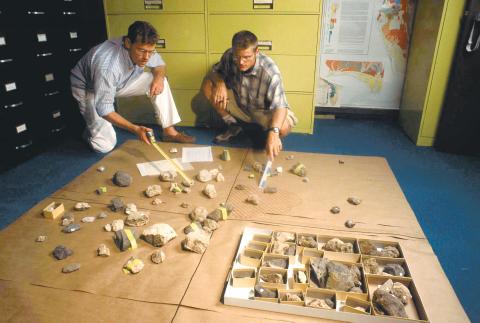Aucilla River Site An Archaeological Gold Mine
A 10,000-year-old underwater time capsule is giving University of Florida scientists new clues about the first people to survive the tumultuous transition from the Ice Age to today's modern climate.
The site in the Florida Panhandle's Aucilla River may be the richest archaeological find for its time. The area, once a center of concentrated human activity, was sealed and preserved by a prehistoric onslaught of flood waters, said Brinnen Carter, a UF archaeologist and member of the excavation team.
``These people who lived during this period had to adjust to drastic differences in climate, animals and plant life,'' Carter said. ``Populations had to move, find new sources of food and water and make new living arrangements to adapt to the far-reaching environmental changes.
``Not only were these the earliest people to see modern climates, but they were the first not to rely heavily on mammoths and mastodons. Essentially, they were the first humans who weren't big game hunters. Perhaps that is why they appear to be more settled down.''
The excavation team's finding that these people lived in concentrated numbers lends one more piece to a growing body of evidence that humans of the early Archaic Period were less nomadic than their hunting predecessors, he said.
Stone projectile points, fire-cracked rock, bone tools and wood fragments collected from the site, named Page/Ladson for the discoverer and landowner, show that Indians lived and worked in the area, probably in relatively small bands, Carter said.
What distinguishes this archaeological deposit from many others is the quantity and quality of artifacts, and that they can be dated to a relatively brief period of time, he said.
Excavating the site are paleontologists and archaeologists from the Florida Museum of Natural History at UF, led by David Webb, with funds from the Florida Department of State and the National Geographic Society.
Cathy Keen

photo by Ray Carson
University of Florida archaeologist Brinnen Carter, left, uses a tape measure to help fellow researcher Mark Muniz reconstruct the location of fire-cracked rocks, stone projectile points and various artifacts that were part of a 10,000-year-old settlement in the Florida Panhandle's Aucilla River.